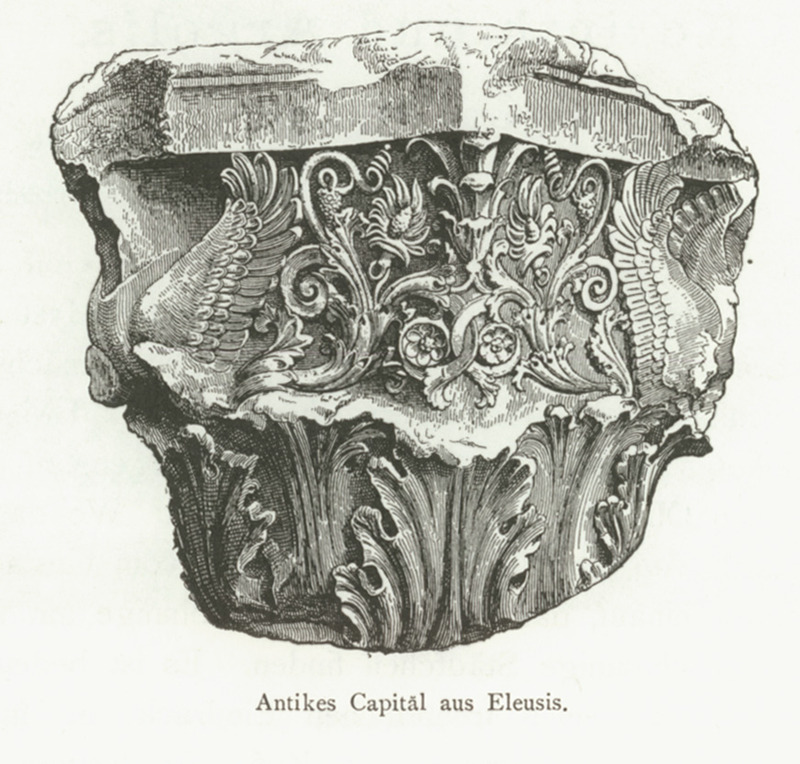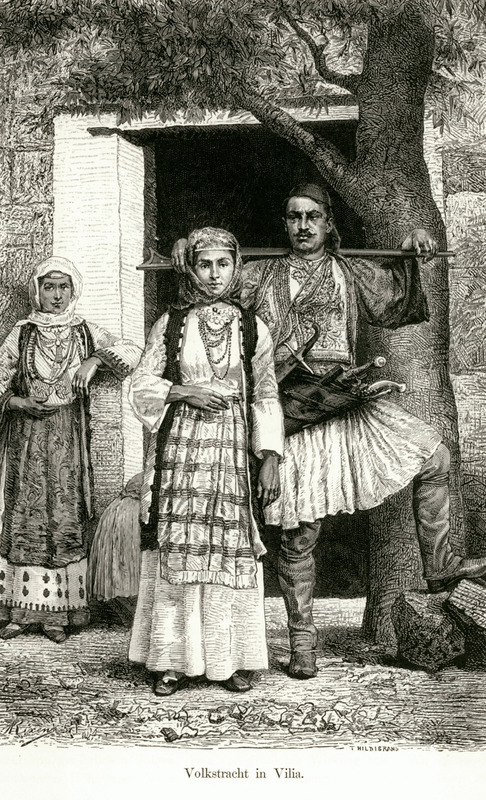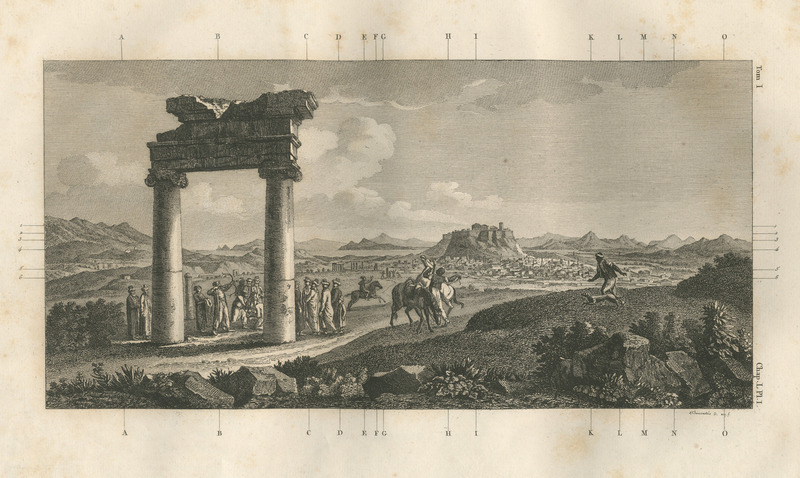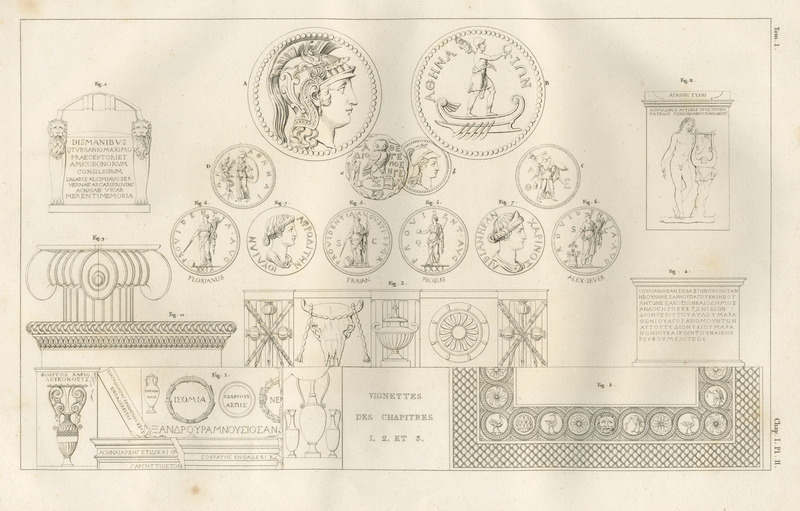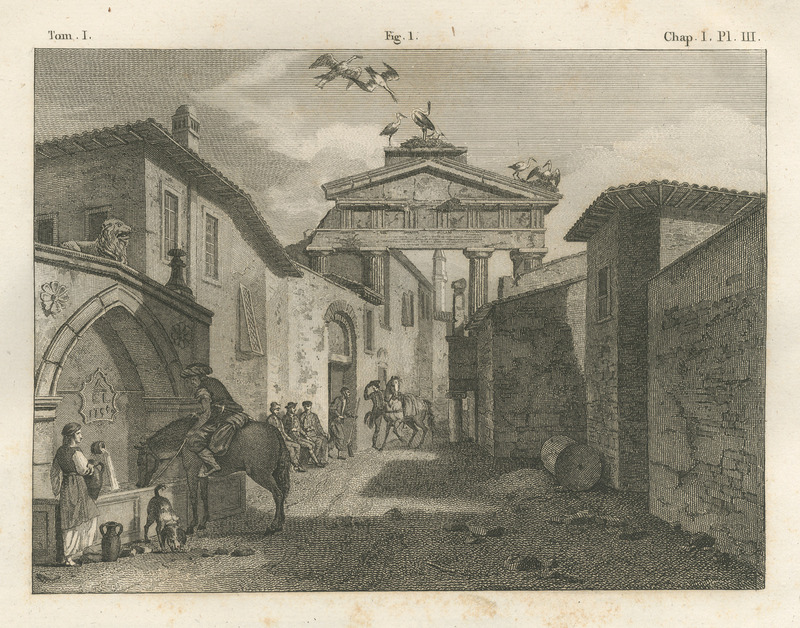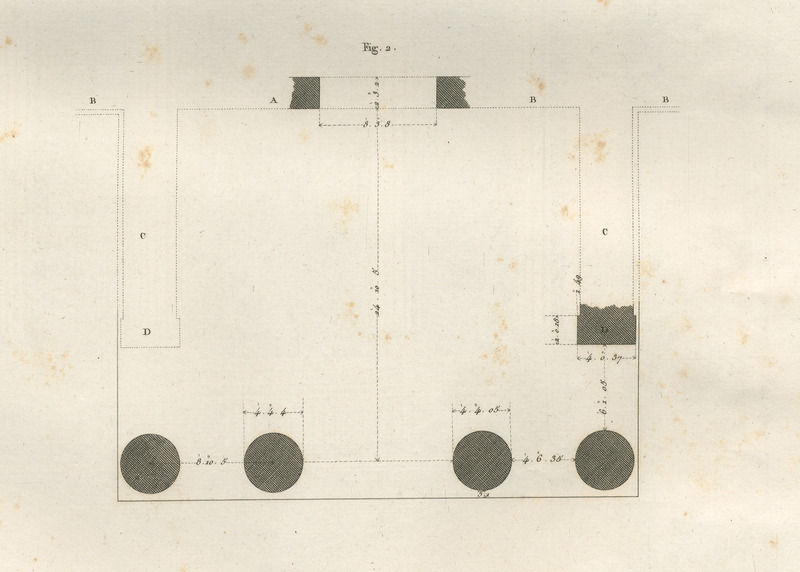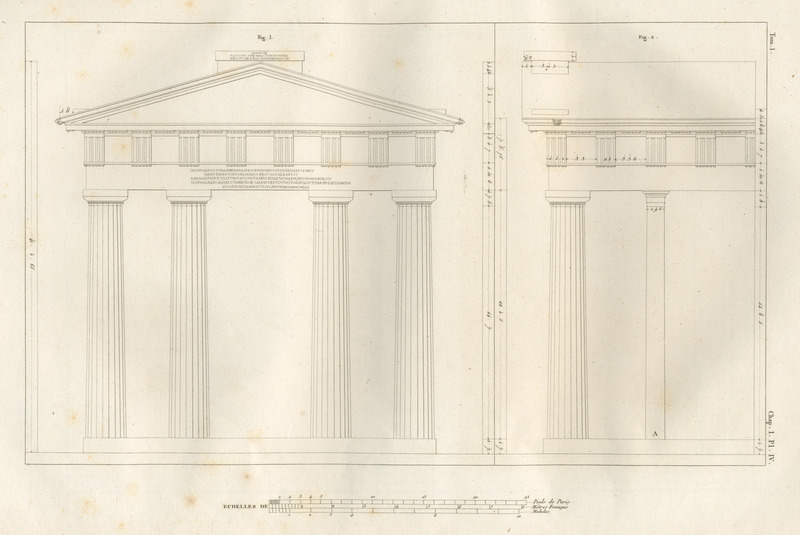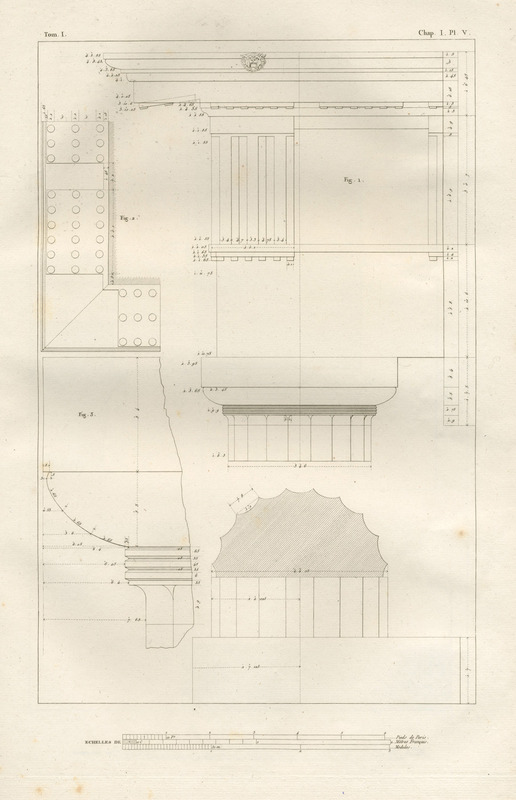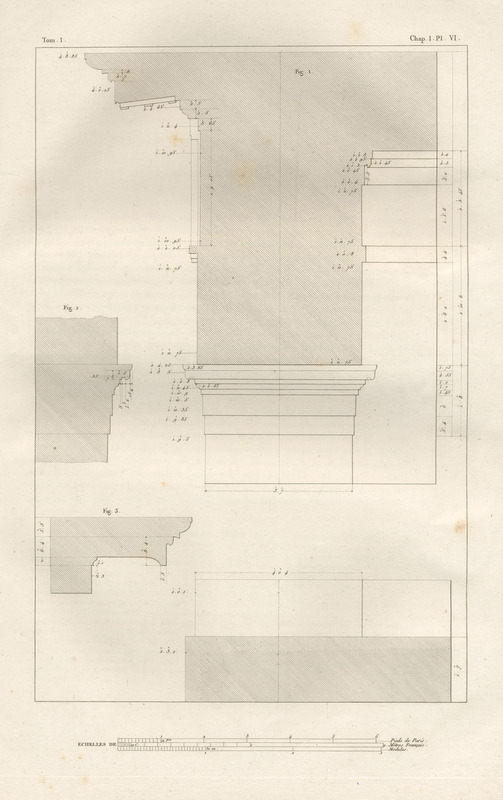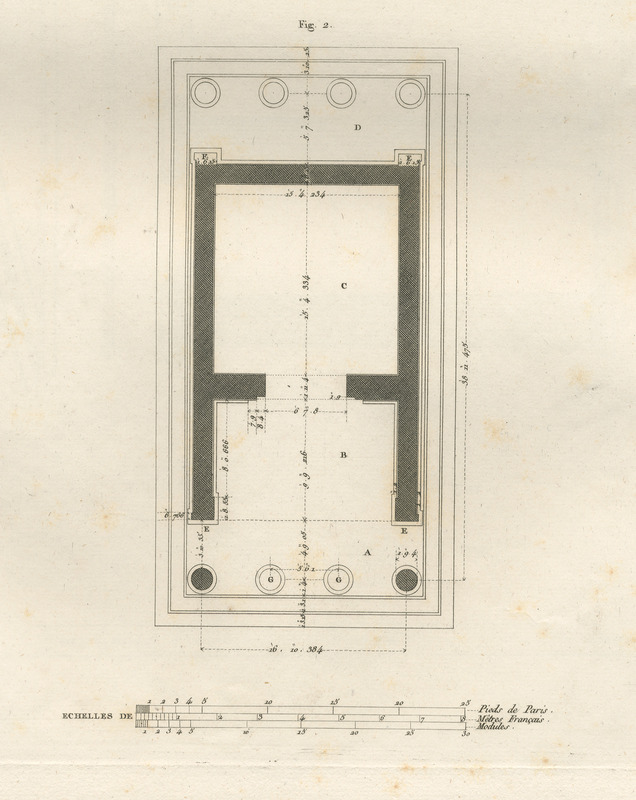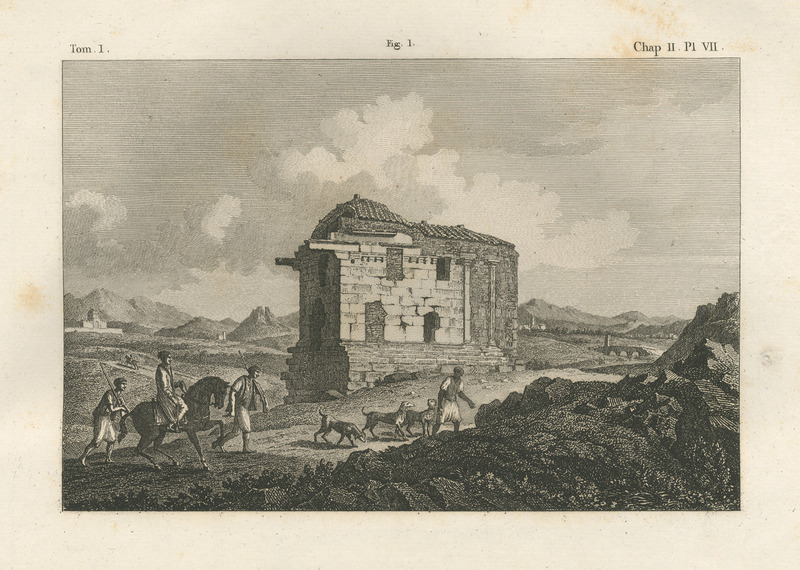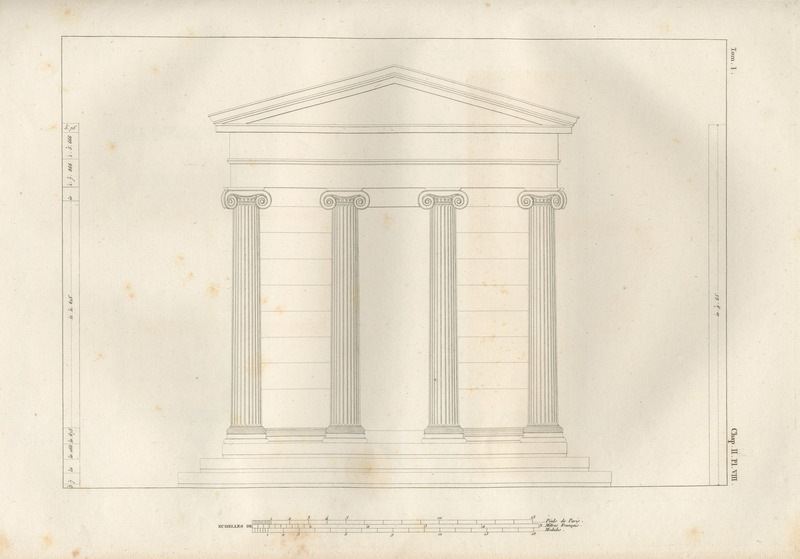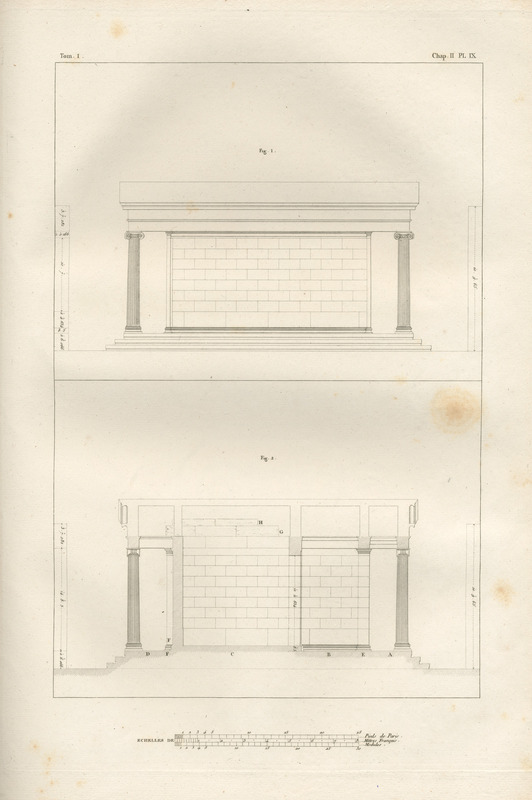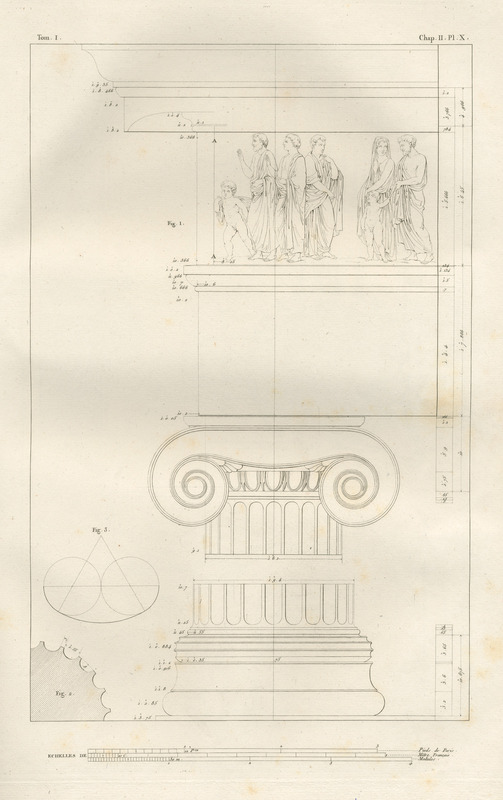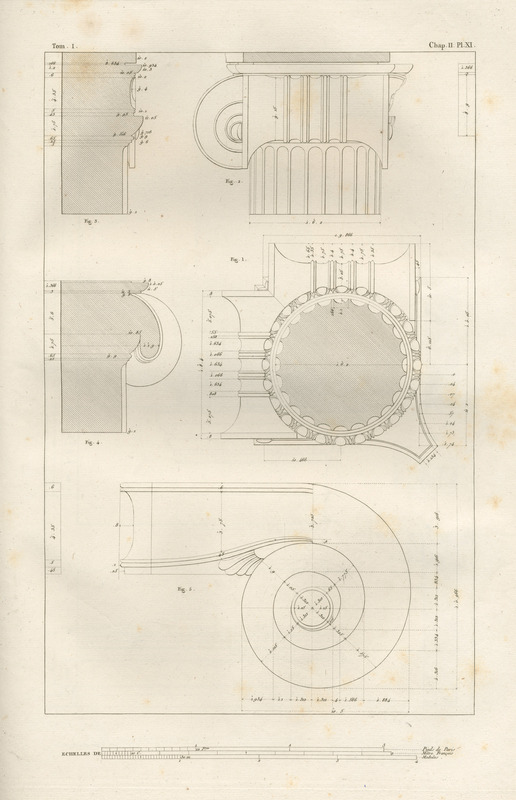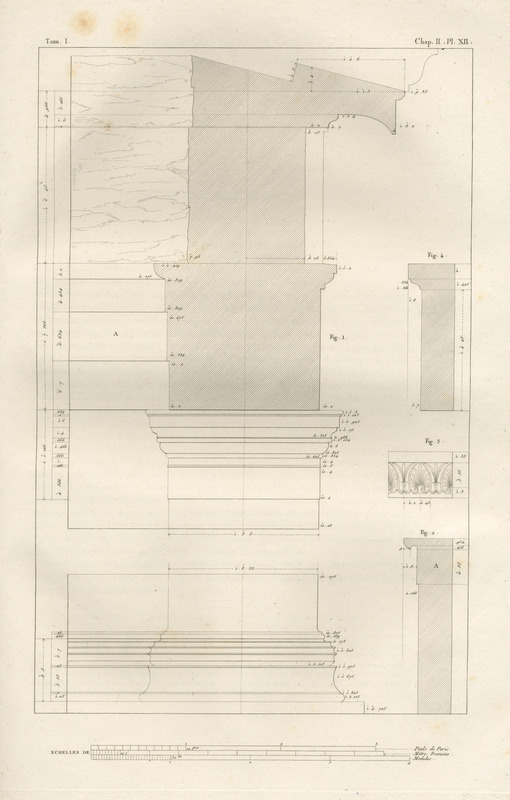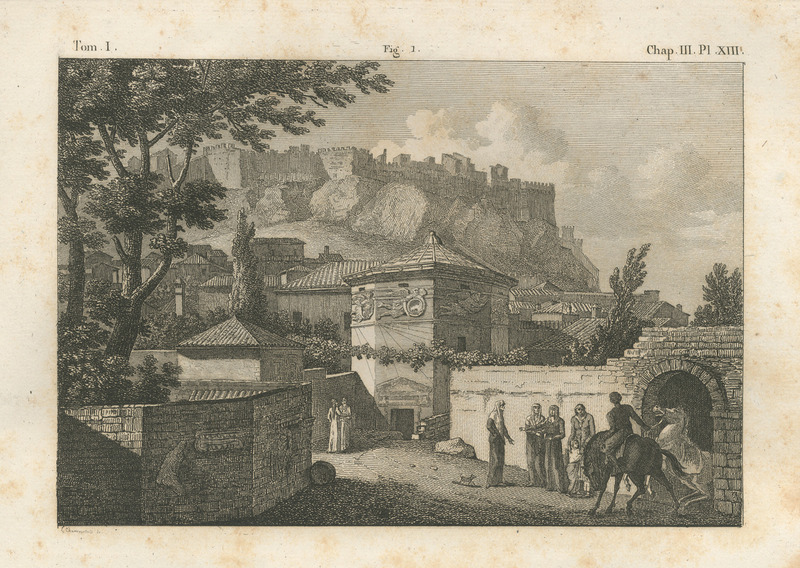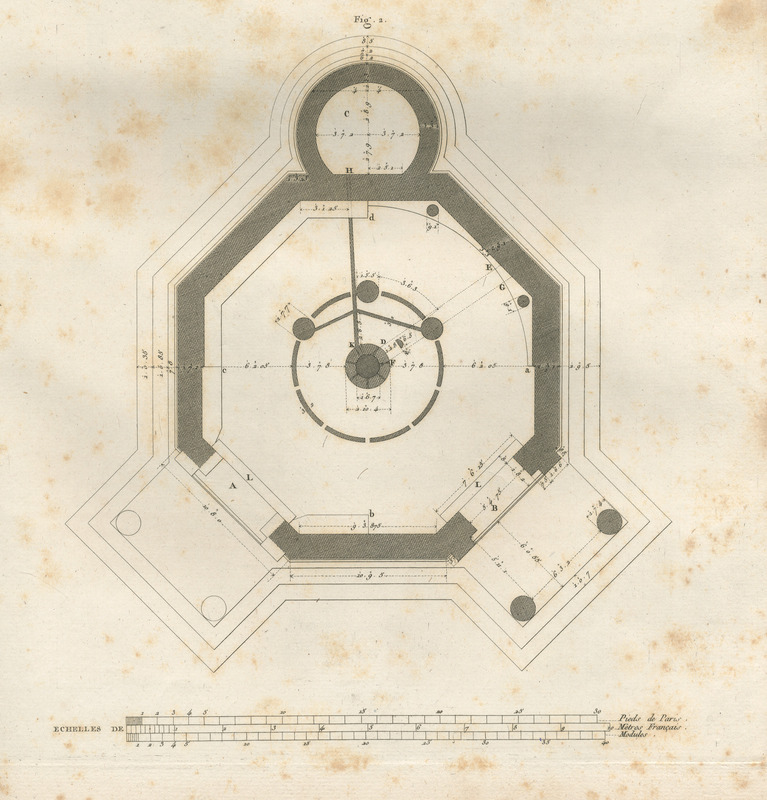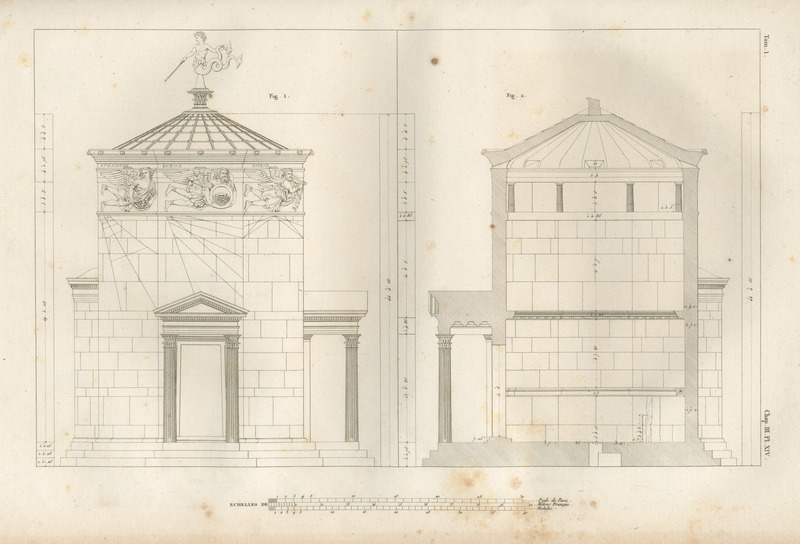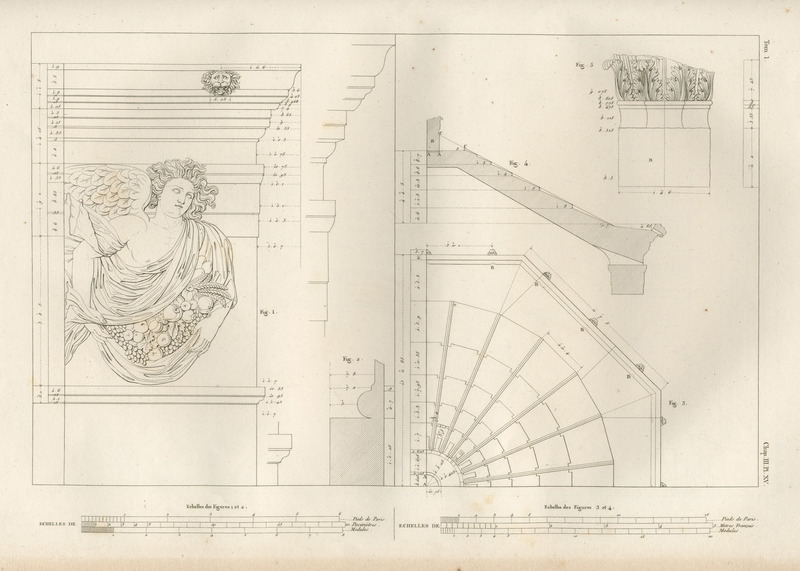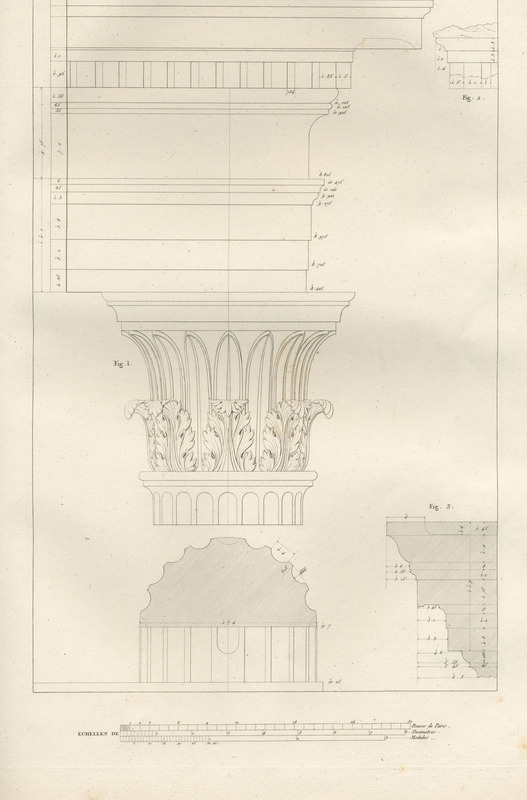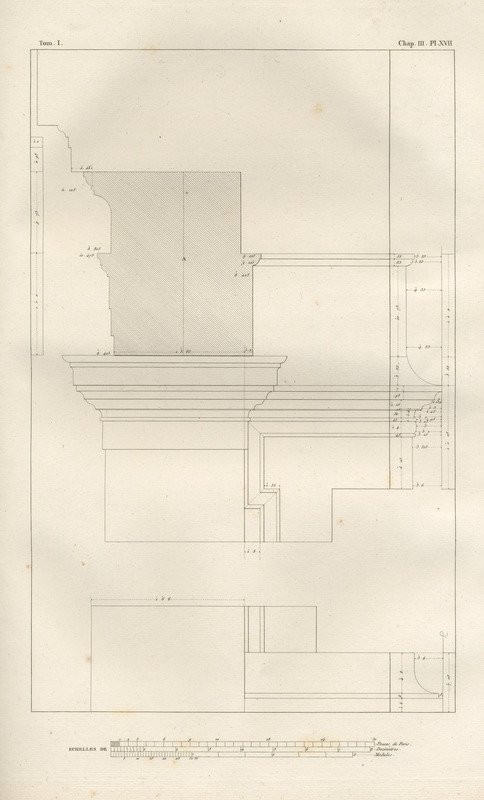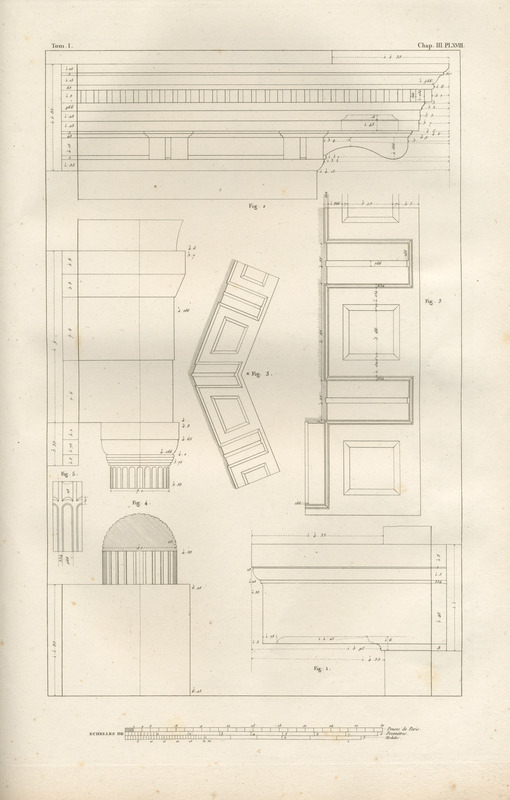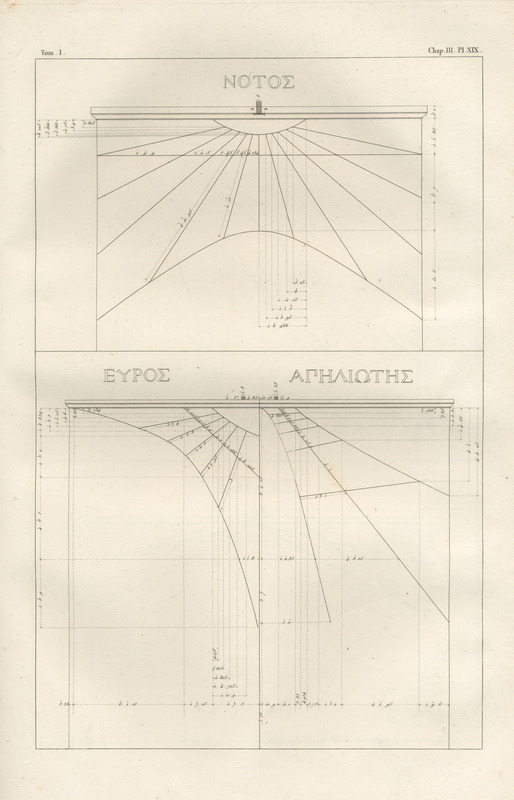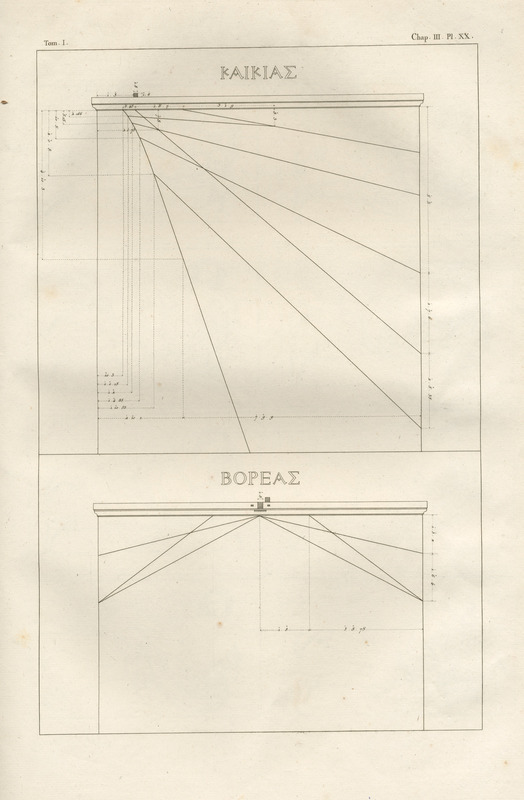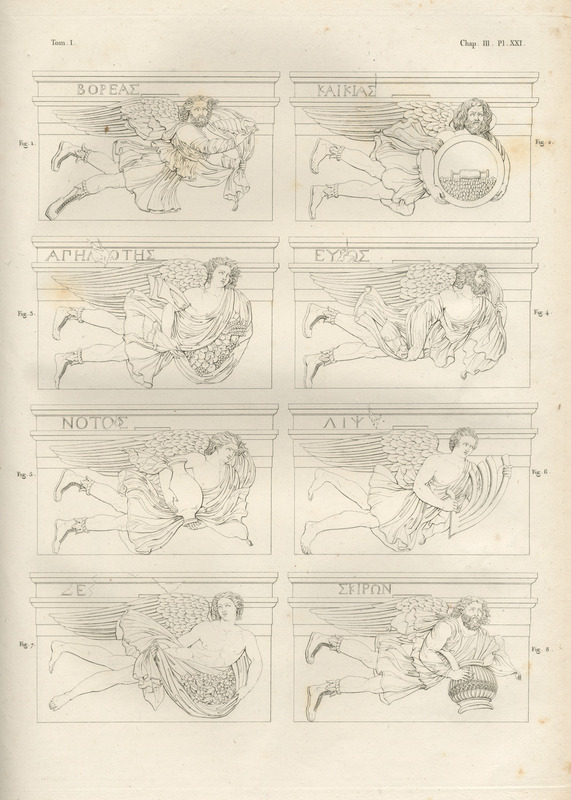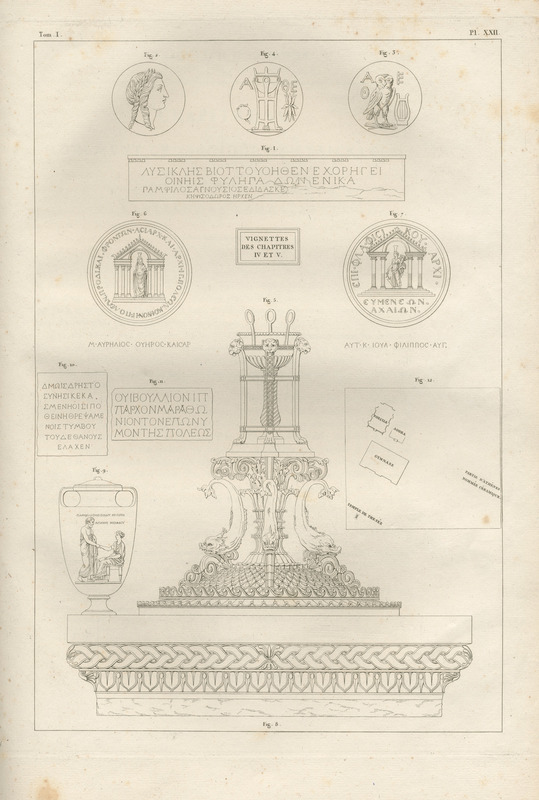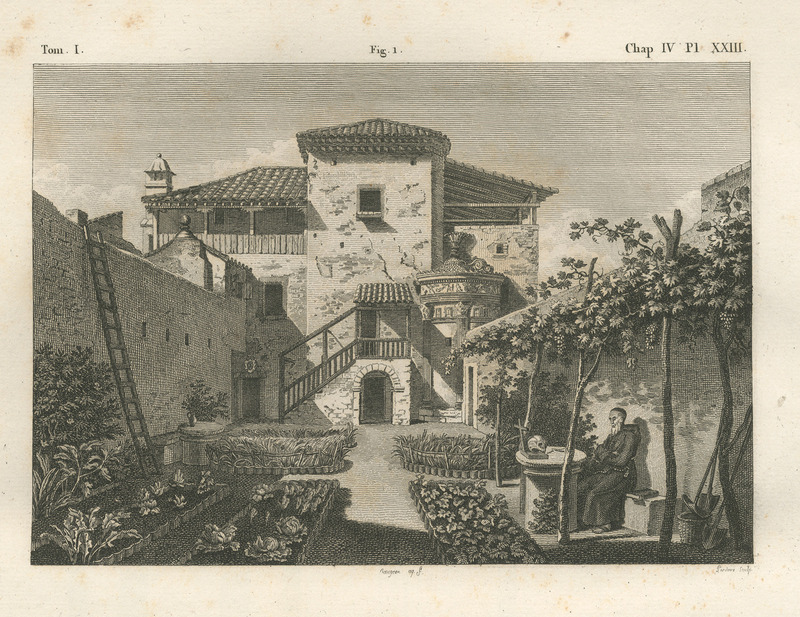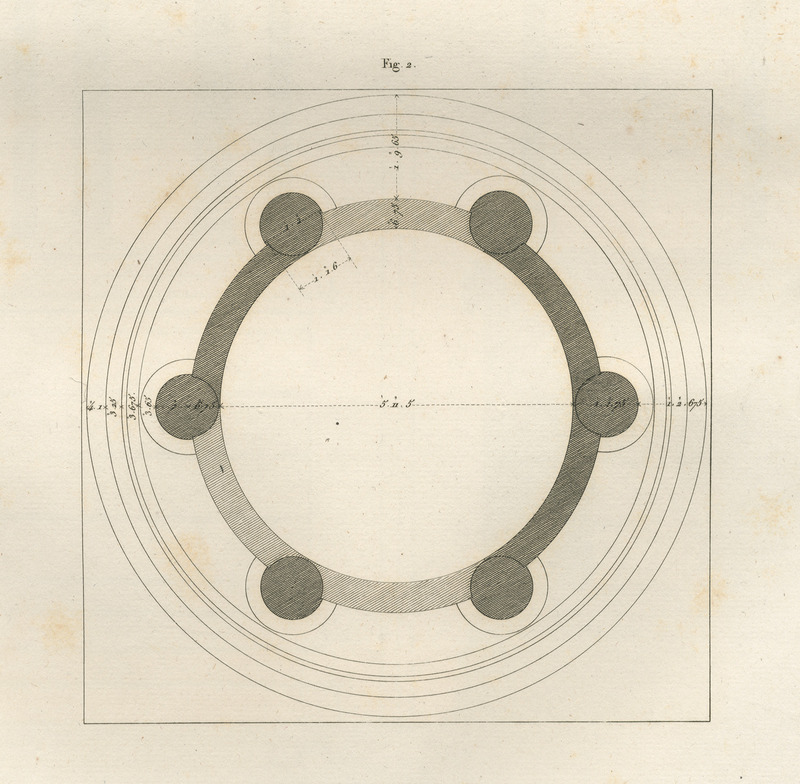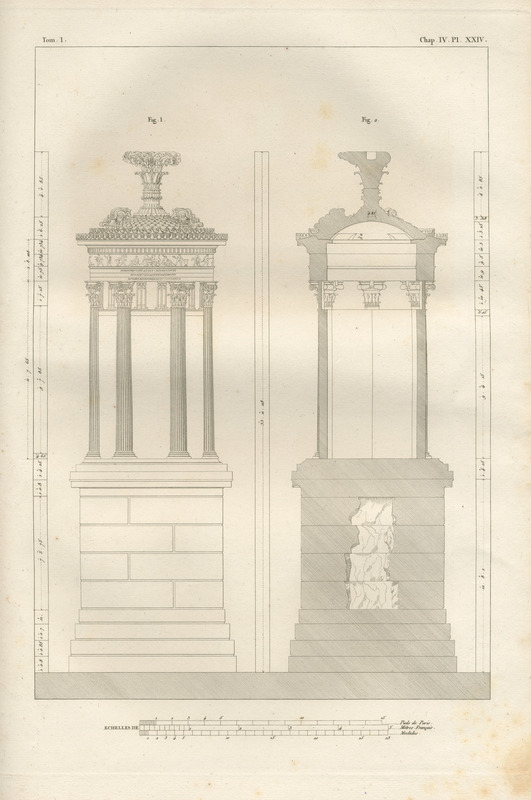Attica (1797 Subjects)
Ancient capital from Eleusis.
Inhabitants of Vilia in traditional costumes.
General view of Athens, charting the main sights and monuments. Salamis, Aegina and the coast of the Peloponnese in the background.
Vignettes of chapters 1, 2 and 5 of Les antiquités d'Athènes by Jame Stuart and Nicholas Revett: ancient coins, inscriptions and architectural features.
The Gate of Athena Archegetis in Athens.
Plan of the Gate of Athena Archegetis.
Elevation of the façade and side of the Gate of Athena Archegetis in Athens.
Drawings of the architrave and column capital of the Gate of Athena Archegetis. Bottom plan of the entablature.
Gate of Athena Archegetis: 1. Capital of the antae, with a section of the entablature. 2. Section of the capital of the antae. 3. Section of the cornice.
Plan of the Temple of Artemis Agrotera on the southern bank of Ilissus river.
The Temple of Artemis Agrotera at Ilissus river.
Elevation of the front of the Temple of Artemis Agrotera at Ilissus river.
1. Elevation of the southern side of the Temple of Artemis Agrotera on Ilissus river. 2. Longitudinal section of the temple.
1. Base and capital of the columns, entablature of the Temple of Artemis Agrotera at Ilissus river. At the time of Stuart and Revett's investigation, the frieze of the temple had already been destroyed and the relief depicted is a fragment of a relief discovered elsewhere in Athens, whose dimensions fit those of the missing part. 2. Elevation of quarter of a column. 3. Drawing of the flutings of the column.
Plan, profile and section of angular capital belonging to the Temple of Artemis Agrotera.
Temple of Artemis Agrotera: Capital and base of one of the antae, with the different architraves which were employed in the building. Fig. 1. The architrave within the portico. Fig. 2. The architrave to the pronaos. Fig. 3. Cymatium on the upper fascia of the architrave of the pronaos. Fig. 4. The architrave to the opisthodomos.
The Horologion of Andronikos Kyrristos (Tower of the Winds) in Athens. The Acropolis in the background. The person standing at the entrance of the monument with his back turned is Seikh Mustafa, chief of the order of Whirling Dervishes, who used the monument as their tekije (dervish lodge). The image also depicts an woman from affluent family promenading with her daughters and maidservant.
Plan of the Horologion of Andronikos Kyrristos (Tower of the Winds).
Elevation and section of the Horologion of Andronikos Kyrristos (Tower of the Winds).
Fig. 1. The external mouldings of the Tower of the Winds. Fig. 2. A section of the uppermost of the three steps which form the basis or stereobata on which the building stands.Fig.3. A quarter of the roof of the Tower of the Winds. Fig. 4. A section of half the aforesaid roof. Fig. 5. The fragment of a capital marked B in the preceeding figure, and which in Plate III of this chapter is, with some restorations made to support the conical Marble and the Triton.
Horologion of Andronikos Kyrristos (Tower of the Winds), Athens:
Fig 1. The capital and entablature of the portico before the door. Fig. 2. A fragment of the Dentells belonging to the cornice of the entablature. Fig. 3. The profile of the cornice belonging to the circular projection under the figure of ΝΟΤΟΣ.
Horologion of Andronikos Kyrristos (Tower of the Winds) in Athens: The capital of one of the antae, with traces of the entablature and the entrance frame. (Drawing based on a small remaining fragment of the capital).
The internal mouldings of the Tower of the Winds: Fig. 1. The lower cornice. Fig. 2. The second cornice, enriched with dentels and modilions. Fig. 3. The soffit of the second cornice. Fig. 4. The circular fascia with the inferior part of one of the columns which it supports, likewise the capital and the entablature of those columns. Fig. 5. Explains the manner in which the cabled part of the flutings on those columns are terminated.
Three of the eight dials on the Tower of the Winds. Under the word ΝΟΤΟΣ is that on the south side; under ΕΥΡΟΣ is that on the south-east side; and under ΑΠΗΛΙΩΤΗΣ, that on the east side of the Tower.
Tower of the Winds (Horologion of Andronikos Kyrristos) in Athens: Two more of the eight dials. Under the word ΚΑΙΚΙΑΣ, is that on the north-east side; and under the word ΒΟΡΕΑΣ, that on the north side of the tower.
Reliefs of the eight winds from the Horologion of Andronikos Kyrristos (Tower of the Winds): 1. ΒΟΡΕΑΣ, Boreas, north wind. 2. ΚΑΙΚΙAΣ, Kaikias, north-east wind 3. ΑΠΗΛΙΩΤΗΣ, Apeliotes, east wind. 4. ΕΥΡΩΣ, Euros, south-east wind 5. ΝΟΤΟΣ, Notos, sοuth wind. 6. ΛΙΨ, Lips, south-west wind. 7. ΖΕΦΥΡΟΣ, Zephyros, west wind. 8. ΣΚΙΡΩΝ, Skiron, north-west wind.
Vignettes of chapters IV and V: Ancient coins, inscriptions and reconstructive drawing of the top of the Choregic Monument of Lysicrates in Athens.
The Choregic Monument of Lysicrates seen from the court of the hospice of the Capuchin monastery, where it was situated. A Capuchin monk living at the monastery.
Plan of the Choregic Monument of Lysicrates in Athens. The preserved part of the monument is shaded in the drawing.
Elevation and section of the Choregic Monument of Lysicrates in Athens.


